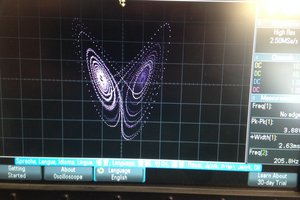1. Components: Products whose molecular components of raw materials are not changed by the factory during processing can be called components.
Components are devices that do not require energy. It includes: resistance, capacitance, and inductance. (Also known as Passive Components)
The components are divided into:
1). Circuit components: diodes, resistors, etc.
2). Connecting components: connectors, sockets, connecting cables, printed circuit boards (PCB)
2. Devices: The products whose molecular structure of raw materials are changed by the factory during production and processing are called devices. The devices are divided into:
1). Active device, its main characteristics are:
It consumes electric energy by itself
It needs external power supply.
2) . Discrete devices are divided into
bipolar transistors
field effect transistors
thyristors
semiconductor resistors and capacitors.
Resistance
The resistance is represented by "R" plus a number in the circuit, such as: R1 represents the resistance numbered 1. The main function of resistance in the circuit is: shunt, current limit, voltage division, bias, etc.
capacitance
Capacitors are generally represented by "C" plus a number in the circuit (for example, C13 represents the capacitor numbered 13). A capacitor is a component composed of two metal films close together and separated by an insulating material. The characteristic of the capacitor is mainly to block the direct current and pass the alternating current.
The capacity of a capacitor indicates the amount of electric energy that can be stored. The obstructive effect of the capacitor on the AC signal is called capacitive reactance, which is related to the frequency and capacitance of the AC signal.
Crystal diode
Crystal diodes are often represented by "D" plus a number in the circuit, such as: D5 represents a diode numbered 5.
Function: The main characteristic of the diode is unidirectional conductivity, that is, under the action of forward voltage, the on-resistance is very small; and under the action of reverse voltage, the on-resistance is extremely large or infinite.
Because the diode has the above-mentioned characteristics, it is often used in circuits such as rectification, isolation, voltage stabilization, polarity protection, code control, frequency modulation, and noise suppression in cordless phones.
Inductance
Although inductors are not used much in electronic production, they are equally important in circuits. We believe that inductors, like capacitors, are also an energy storage element, which can convert electrical energy into magnetic field energy and store energy in the magnetic field. The inductor is represented by the symbol L. Its basic unit is Henry (H), and millihenry (mH) is commonly used as the unit. It often works with capacitors to form LC filters, LC oscillators and so on. In addition, people also use the characteristics of inductance to manufacture choke coils, transformers, relays, etc.
Combination circuit
An integrated circuit is a device with a certain function formed by integrating transistors, resistors, capacitors and other components on a silicon substrate by using a special process. The English abbreviation is IC, also commonly known as a chip.
Analog integrated circuits refer to analog integrated circuits that are integrated with capacitors, resistors, transistors and other components to process analog signals. There are many analog integrated circuits, such as integrated operational amplifiers, comparators, logarithmic and exponential amplifiers, analog multipliers (dividers), phase-locked loops, power management chips, etc. The main components of analog integrated circuits are: amplifiers, filters, feedback circuits, reference source circuits, switched capacitor circuits, and so on. Analog integrated circuit design is mainly obtained through manual circuit debugging and simulation by experienced designers. Most...
Read more » Electroniclovers123
Electroniclovers123
 UTSOURCE
UTSOURCE

 kamalkedin123
kamalkedin123
 Tom Quartararo
Tom Quartararo